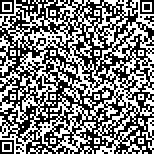Analysis of Anomalous First/Last Frost over Middle Reaches of the Yarlung Zangbo River in Tibet from 1961 to 2000
- Article
- Figures
- Metrics
- Preview PDF
- Reference
- Related
- Cited by
- Materials
Abstract:
According to the frost index defined by the minimum air temperature ≤0℃, based on the method of modern times climate diagnosis, the climatic change of the anomalous first and last date of frost are analyzed with 4 meteorological stations′ data of daily minimum temperature over the middle reaches of the Yarlung Zangbo River in Tibet from 1961 to 2000. The results show that the first frost appeared late, while the last frost ended early, so that the frostless period was extended significantly in the eastern part of Yarlung Zangbo River basin in the past 40 years, but the tendency in Gyantse was on the contrary. In 1970s and 1990s, because the first frost appeared late and the last frost ended early made the growth season in the eastern part of Brahmaputra basin prolong, especially in 1990s. On the other hand, ending frost date in Gyantse presented prolonged tendency per decade in the west of Yarlung Zangbo River basin. In addition, it is found that the frequency of exceptional first frost date was 2 or 3 times, especially it was the most in Tesdang, meanwhile the frequency of anomalous ending frost date was 1 or 4 times, it was the most in Gyantse. The abrupt change of the first date and the ending date of frost only occurred in Tesdang.
Keywords:
Project Supported:
Clc Number:


Mobile website









